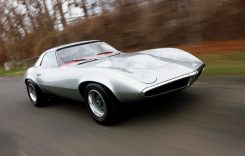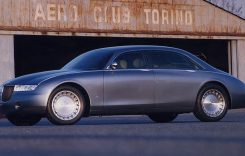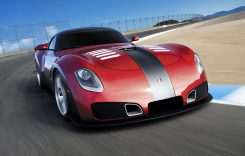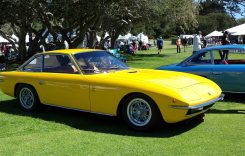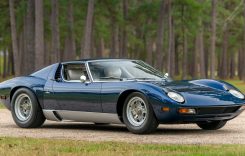Kali Protectives set out to differentiate itself from other helmet manufacturers when it entered the motorcycle world in 2008 with its first off-road lid. The company, founded by former aerospace engineer Brad Waldron, worked to develop a “Composite Fusion” process, which molds the EPS liner directly to the outer shell of the helmet. The idea behind the technology is to eliminate the gap between the shell and EPS liner found on traditionally constructed helmets to better disperse energy in the event of an impact.

Kali claims that non-fused EPS/Shell combinations resulted in a double impact spike in testing, ground to shell first and then shell to EPS, and that the second spike is much more dramatic than the first. In an effort to smooth impact force in the event of a crash, Composite Fusion was born. According to the Kali website, “by merging a helmet’s shell and foam we avoid the double impact incurred by all other helmets. Then we beef up the foam to absorb more G-Forces.”
In its first iteration, Kali molded a single density EPS inside the shell. It’s Composite Fusion Plus design took things a step further, interweaving multiple densities of EPS (harder at the shell and softer at the head) to better disperse impact energy. Fusion Plus construction is included on Kali’s top-of-the-line Naza Carbon full-face lid, which the company sent our way for testing.
A Kali Protectives cutaway during the 2014 AIMExpo which shows the multiple foam densities and Composite Fusion technology.
I got to check out a cutaway display and see the Kali EPS/Shell dynamic for myself during the 2013 AIMExpo, which was intriguing, but I was more struck by how light the off-road lid I tried on felt. Kali’s Naza Carbon is no different, tipping the scales at 3.2 pounds. That’s nearly half a pound lighter than Bell’s Star Carbon Race Day Helmet, which impressed Cruiser Editor Bryan Harley for its featherweight feel.
According to Kali, Composite Fusion makes it possible to use a thinner shell without sacrificing protective capability since G-Force is dispersed more quickly and effectively through the EPS. There are seven different Contego EPS foam densities utilized on the Naza Carbon, which is ECE 22.05 and DOT approved and meets or exceeds requirements set forth by AMA, FIM, CCS and WERA racing bodies.
We got the Naza Carbon Horns design in black, which displays the Carbon/Kevlar/Fiberglass Tri-Weave construction under some H.R. Giger-ish graphics that elicited compliments from drivers at stoplights on multiple occasions. It’s made even more eye-catching thanks to the Smoke face shield I popped on when the helmet first arrived (sold separately). The Quick Release mechanism is similar to those used on most full-face helmets on the market, with a pull-down tab release that’s quick and easy to use. The downside of the shield is that there’s no locking mechanism to ensure it stays shut.
I measure an XL and have a long oval-shaped head and the fit was perfect, becoming even more comfortable, while remaining snug, after a few months use. Kali includes Comfort Cheek Pads and Performance Dual Density Cheek Pads to ensure optimal fitment. Kali also includes a helmet bag and travel bag.
The only gripe is that the Naza Carbon doesn’t come with a chin curtain. Kali representatives have assured us that forthcoming versions of the Naza will include a chin curtain and other refinements.
On the road the Naza Carbon performs well in terms of aerodynamics, producing minimal head-shake at freeway speeds. Even when turning to look back during lane changes or in gusty conditions, the pull was negligible and never distracting. The field of vision is good as well, allowing me to see to the extent of my periphery and well above and below without obstruction.
Air is directed through the lid via top-vent and chin-bar vent that I had a hard time getting a read on. This is because there is no chin curtain on the Naza Carbon as tested, which allows for a steady stream of air to flow up and into your face.
There’s currently no Kali-produced piece available to remedy this issue either. It’s nice for the fact that I never, regardless of condition outside, experience fogging on the face shield. The downside for me became chapped lips on colder days, dried out eyes after longer rides and worry about the inevitable moment something other than air flies up inside the helmet. The absence of a chin curtain also contributes to the Naza Carbon being loud pretty much anywhere above 55 mph. Company reps have assured us that a forthcoming version of the Naza will feature a chin curtain, larger neck roll and locking shield.
Pricing is middle of the pack, with an MSRP of $370 as tested. There is some sacrifice in terms of road noise and if that, along with the absence of a chin curtain, is a concern, the Naza Carbon might not be for you. However, aerodynamically it performs well, it’s lightweight, fits comfortably and comes with a reasonable price tag. It’s built from some of the same top-spec components utilized on other, pricier lids, and looks good to boot.
